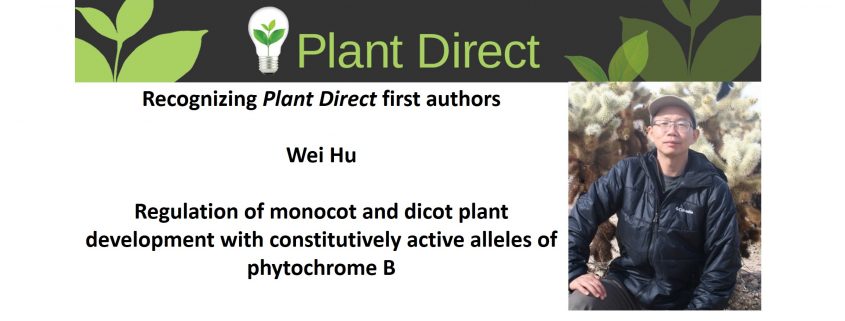Recognizing Plant Direct authors: Wei Hu
Wei Hu, first author of Regulation of monocot and dicot plant development with constitutively active alleles of phytochrome B
Current Position: Assistant project scientist at Prof. J. Clark Lagarias’ Laboratory, Department of Molecular and Cellular Biology, University of California Davis, USA
Education:
PhD, Plant Biology, in Prof. Hong Ma’s Laboratory, Pennsylvania State University, USA
MS, Environmental Biology, Nanjing University, China
BS, Environmental Sciences, Nanjing University, China
Non-scientific Interests: badminton, soccer, hiking, gardening, photography
Brief bio: My lifetime interest in plants arose during my childhood in subtropical southern China which was rich of evergreen plants. I used to explore all kinds of farmland crops and wild plants near my home. I was fortunate to study plant biology for my PhD and to explore the genetic and molecular mechanisms that regulate plant development and growth. Deeply appreciating the famous saying that “every organism depends on the sun for growth,” I have been particularly fortunate to pursue plant photoreceptor research in the Lagarias laboratory for the past fourteen years. Plant photosynthesis converts light energy into chemical energy that is consumed by almost the entire ecosystem on earth. Plant photoreceptors including the red/far-red sensing phytochromes enable optimal growth and photosynthesis of plants in response to changing light environment. Since its discovery in 2007, a missense allele of Arabidopsis phytochrome B (YHB) that exhibits constitutive activity in a light-independent manner has been a central focus of my research. In this Plant Direct article, we examined how expression of the same dominant mutant affects photomorphogenesis in other eudicot and monocot crop plant species. Like our earlier investigations using the model plant Arabidopsis thaliana, these studies provide evidence that YHB alleles can be used to suppress shade avoidance growth responses and also modulate flowering time – revealing the great potential for novel agricultural applications.




